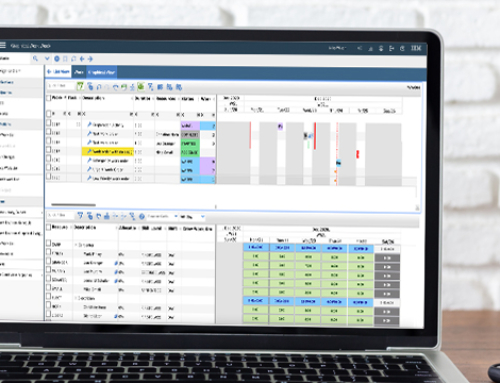Too often, we find that our clients have Maximo well-configured and humming along smoothly from a back-office view, but have users doing extra work collecting data that’s either redundant or not useful. Often, upper-level managers tell us they want to be able to see reports and KPIs with cost information, labor by location or asset, etc. which they are not able to get. When one considers that Maximo can be coaxed into doing just about anything we can imagine with the information within its database, this kind of disparity should not exist.
Let’s examine how a well-executed deployment can become misaligned and what it takes to fix it. Keep in mind that your next version update provides a perfect opportunity to get everything on track. Areas from program sponsorship through user training are all significant. Let’s start at the top where involvement is vital.
Involvement is more than “buy-in”, which implies that someone in a leadership role has used their authority to approve a purchase order. With an enterprise solution set like Maximo, which affects the entire organization’s performance, continuous leadership involvement is needed. When leaders bought-into Maximo way back when, you can be assured that there was a set of results they were led to expect from it. However a common complaint we hear is that upper level managers are not getting the information they want from the system. Good leaders will read this point and will know exactly what’s needed. We won’t assume to tell someone how to do their job well.
Involvement starts at the very beginning. While we’ve made it clear that a Maximo deployment, like any other enterprise level project, needs to be steered from above, doing so without involving the right people at different levels is a recipe for a late, over-budget and underperforming result.
Project leaders need to hear the needs and concerns of the end-users. These may be inventory or storeroom clerks, technicians, and even their supervisors and managers. First-line supervision knows what is needed to keep the work moving and on-plan every day, week, month, etc. The people he or she supervises know what they need to accomplish their tasks each and every day. Their combined input is necessary.
Compare the effect to the human body needing to accomplish work. The head uses the brain and senses to direct the working arms, legs, hands and feet. The body’s major organs and muscle groups provide functions and resources the hands and feet need to accomplish work. A simple example shows the interdependency: The two feet can’t go in opposite directions because the brain just won’t let them. Take the brain away and they might try, and the heart may pump the blood to them and the leg muscles may move in two directions, but the result would probably be a fall. Without a major organ like the heart involved the brain may get the feet moving together in the right direction, but before long, without sufficient blood flow for the work, they’ll get tired out or worse.
It’s the same in your Maximo process. Responsible leadership doesn’t need to exasperate by over-scrutinizing the program, but they can’t check out and check back in months or years later only to find that the program veered off-course, of that the managers are frustrated and user turnover has untrained new employees using the system.
People will come and go, and processes and requirements will change. Be sure that formal training is provided to new users and an ongoing training program is in place for all users. If not, people will find unique (and not always appropriate) ways to adapt to the collection of those small changes that happen over time. These small disconnects tend to become the foundation of greater functional misalignment if left to remain. An ongoing training program prevents this and ensures that redundant efforts and records are not created and that upper management gets what they expected from the beginning, when they first bought in.
In many industries, certifications for various crafts and skills are required. Even if this is not the case in your organization, appropriately trained Maximo users at all levels and varying roles should be certified either by IBM, or by your organization. You may need to develop a certification program of your own. This enforces the idea that your Maximo-related business processes are not to be taken lightly. If you can attach a simple reward/recognition program, it’s much more likely that you’ll maintain a Maximo-knowledgeable workforce.
How might an organization get to the level of alignment and performance we’ve been discussing? A first step is to establish a group of the right people – with leadership, management/supervision and system users represented. Establish a workable meeting schedule that is appropriate to the overall, such as meeting weekly during an upgrade or deployment, or otherwise monthly. Participation must be mandatory. If not, people will opt-out and gaps will form as a result of their missing input. Remember that the performance of the entire organization is affected by the results this team achieves. Any related meetings and events need to be treated with an appropriate level of respect.
Overall, remember that the organization has a purpose, to provide a product or service to customers. Enterprise systems such as Maximo are major tools which help the organization do so at a high level of quality and performance- they are not the end product or service. Keeping Maximo well aligned with the processes that directly fulfill the organization’s purpose requires that your people well aligned as well. When this point is well embedded in the organization’s culture, people are more willing to participate and adjust when needed. The end result of this alignment serves the organization’s purposes by maintaining a satisfied workforce, well maintained assets and facilities, and satisfied customers.







